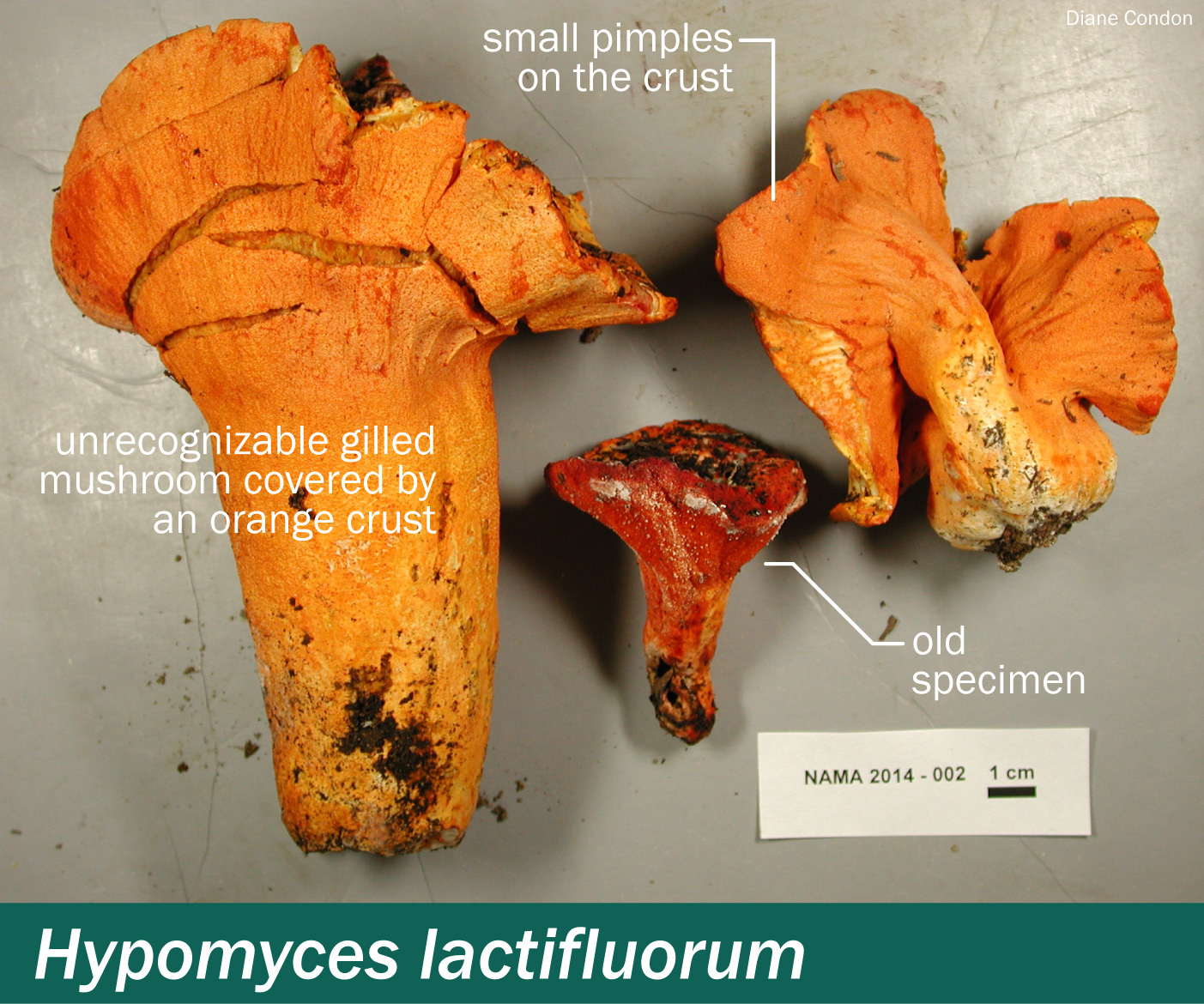Hypomyces lactifluorum — Lobster mushroom
The lobster mushroom is a parasitized white mushroom. The parasite forms an orange crust that covers and distorts the original mushroom. In most cases the victim is a short-stalked russula (Russula brevipes) mushroom. In the end, the lobster no longer looks anything like a Russula. The colour of the crust is yellow-orange to orange when young and fresh, becoming magenta-blotched or purple with age. The surface is pimpled from the small fruitbodies of the parasite that are embedded in its crust. These pimples are often a bit darker than the surrounding tissue. The internal flesh is firm and white.
Odour: Indistinct. A strong fishy smell indicates an old mushroom that should not be eaten.
Taste: Mild.
Ring or veil: None.
Cup: None.
Spores: 30–50 x 4.5–8.0 µm, spindle-shaped, two-celled, densely warted.
Habitat: Parasitic on short-stalked russulas (Russula brevipes) wherever that species grows, common in Sitka spruce (Picea sitchensis), Douglas fir (Pseudotsuga menziesii) and western hemlock (Tsuga heterophylla) forests.
It had seemed possible that the parasitic Hypomyces lactifluorum might occasionally colonize a poisonous mushroom rather than the usual, edible short-stalked russula. Cumulative evidence to date is that the parasite is specific to edible Russula species7 and as long as lobster mushrooms are young and fresh, they seem to be edible for most people. Compared with the host russula, lobsters are high in fatty acids and in amino acids (aspartic and glutamic acid) that may contribute to flavour8. They have to be cooked! A few individuals get sick from eating lobster mushrooms, experiencing gastrointestinal distress, sweating and a burning throat9.
Treatment: Contact your regional Poison Control Centre if you or someone you know is ill after eating lobster mushrooms. Poison centres provide free, expert medical advice 24 hours a day, seven days a week. If possible, save the mushrooms or some of the leftover food containing the mushrooms to help confirm identification.
Poison Control:
British Columbia: 604-682-5050 or 1-800-567-8911.
United States (WA, OR, ID): 1-800-222-1222.

